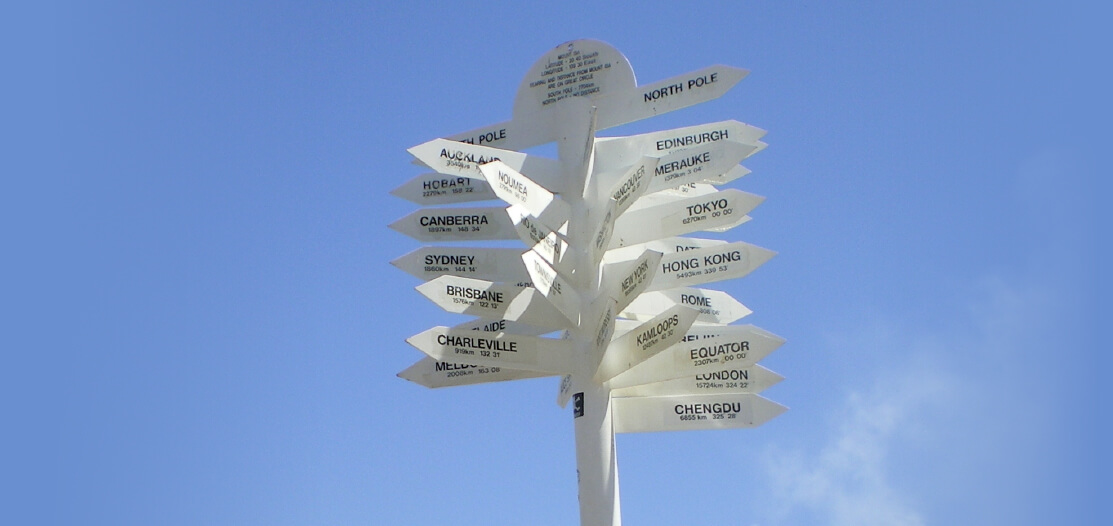For those who like history this is catered for in abundance and fine detail on Norfolk Island. For those who have only a cursory interest – you are also well catered for. There is so much you can choose to see and do that will give you an insight into the sometimes bloody, barbaric, colourful, and at times inspirational past. You can get as involved (or not) as takes your fancy. Most (but not all) of this is centred around the Kingston area. This is the original settlement site, and is now part of the World Heritage listed area. It was where Philip Gidley King established the first settlement, the Sirius (of First Fleet fame) was wrecked, the second settlement was built, and later the first Pitcairn settlers moved into on arrival, so there are lots of different ‘history’ stories to be told. Then of course there is the history that came with the first Pitcairners – of the Mutiny on the Bounty as the incident is now well known as.
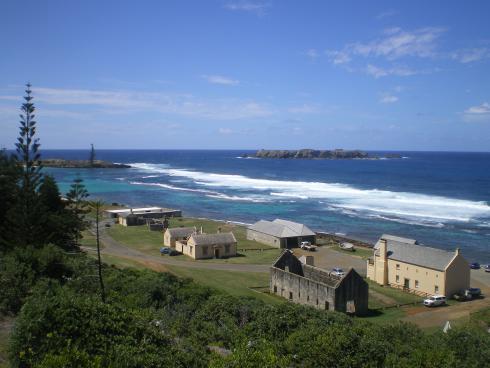
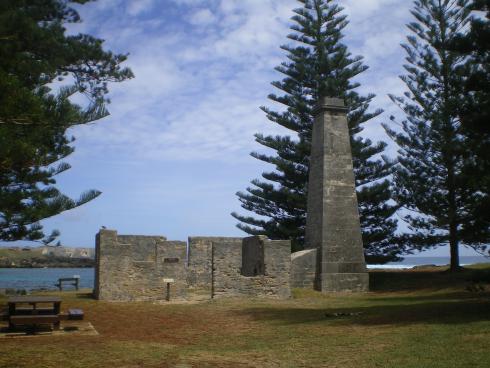
Until recently (July 16) it was considered to be the “Capital” of the Independent Australian Territory of Norfolk Island as it housed Government House, The Legislative Assembly, The Courthouse and the Chief Administrative Officers all in the beautiful old buildings along Quality Row. However it was “going bankrupt” (as one local told me) so has been bailed out by Canberra, and is in the transition stage of becoming part of NSW. They now have a new Council and have elected one of that number to be a Mayor. This is very controversial with some locals dead set against it and others think it is the best thing that could have happened. They now qualify for the Aged Pension and Medicare and other benefits they never had before. If you want to get into a heated debate ask a local what they think. (Some of them – those opposing it - will tell you even without you asking!) So history is being made even as we speak.
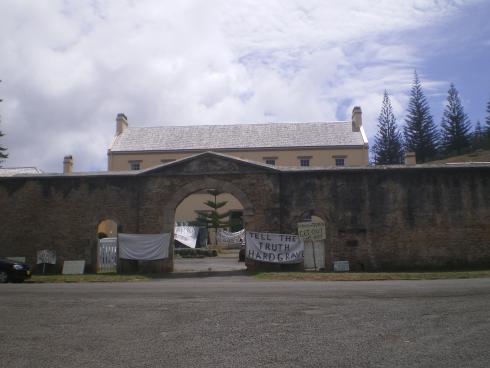
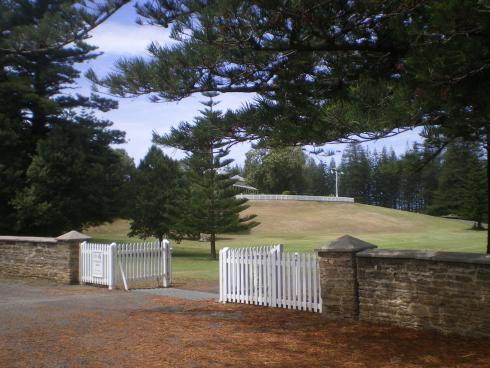
The Norfolk Island Museum is a great place to start your History tour. In fact they run 4 Museums, have their information centre (selling cold drinks, books and souvenirs as well as tours) in the former Royal Engineers Office (the R.E.O as it is known) conduct Cemetery Tours and also produce a historical play “The Trial of the Fifteen.” As I said before they really know how to look after their tourists on Norfolk Island.
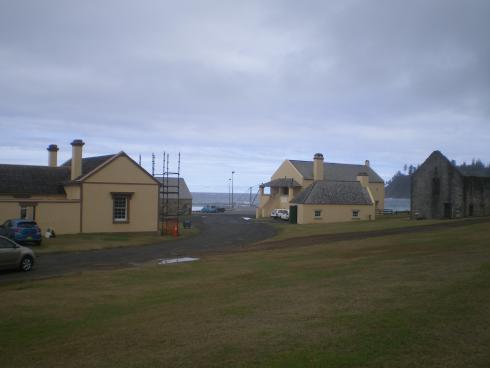
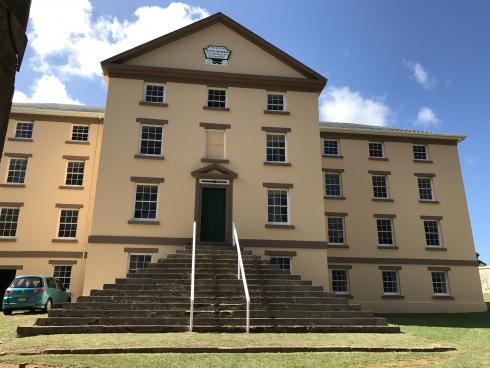
The Museums are
The Pier Store – which is at the Kingston Pier (which is still used when boats have to be unloaded) and is one of the historical buildings from the second settlement.
HMS Sirius – which is in what was part of the “new gaol”. It has what I found was a very interesting video on how they found the wreckage from the Sirius and retrieved some of the items which are now on display in the museum. (There is also a wall with a plaque on the Foreshore opposite where it foundered on the reef.)
Commissariat Store – which is a very imposing building on Quality Row – as the street is called. I was told it was originally three stories, but a floor was removed and now the All Saints Anglican Church is on the first floor, with the Museum on the ground floor. (Some may note a fourth set of windows in the photo – I have no idea what is/was up there. I saw no steps to access it.) There is so much of the History of the Island here you could spend hours. It covers the Polynesian settlement that was long gone before Captain Cook discovered the Island, the first visit by Philip Gidley King and everything since.
No. 10 Quality Row – which is one of the homes which has been restored.
You can pay for a single entry to one or another of the Museums or buy a “Norfolk Island Museum Pass”. I think this is excellent value as it includes multiple entries to all four museums (open 11am to 3pm Mon to Sat) at any time during your stay, as well as two guided Tag-A-Long tours. You can do the Pier Store and HMS Sirius on Tuesday, Thursday and Saturdays and the other two on Monday, Wednesday and Friday. The tours leave from the R.E.O Café and Bookshop at 9.30am and take an hour and a half. You go first (in your own cars) to one, then the other. The presenters give you a real insight into Norfolk Island history and they recount some wonderful tales, which make the items on display even more interesting to you. Unfortunately I only got to do one of these. I visited the other two Museums, and the people on duty do tell you a few things, but they can not do it like on the Tag –a Long Tour as there are people coming and going all the time. You can check it all out for yourself at www.museums.gov.nf if you want to know more.
The Cemetery is a fascinating place to visit in any old historical site I find, but it is particularly so on Norfolk Island. I did not get to do the tour, but there was one there when I was there one day and the bits I overheard made me decide it is on my “must do” list for my next trip. It has the most picturesque setting, being alongside the beach at what is known as Cemetery Bay, and the picture perfect Golf Course is alongside. It was sad to see how many infants are buried there. Many of the adults too were only young. As the prisoners sent there were ‘repeat offenders’ and only teenagers or early 20’s when they died one has to wonder at what brought them there. It is also amazing to see how many drowned – mostly in Emily Bay, which is still the most popular swimming place on the Island. But then I guess so few people could swim in those days and they were probably lured into the inviting waters on a hot day. Just outside the fence – on the sea side - is what is known as Murderers Mound where they buried the prisoners who mutineered, were tried and hanged. My friend Lorraine had been asked by a friend of hers to take a photo of the plaque for her ancestor (Mary Butler) who was on one of the first boats with women on board to come out from England. She married one of the men on the third fleet. I felt very pleased with myself when I stumbled across it for her. There was also a previous burial site at Emily Bay and there are still a few plaques there too, including one for twin girls aged 2 who were killed when a tree fell on them.
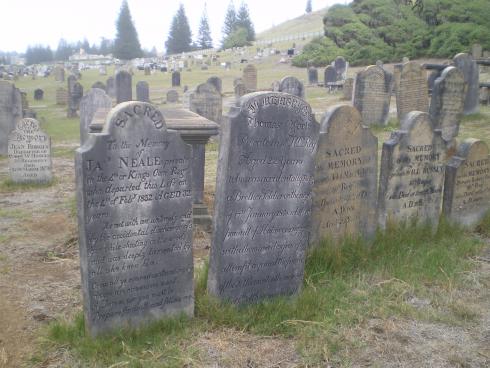
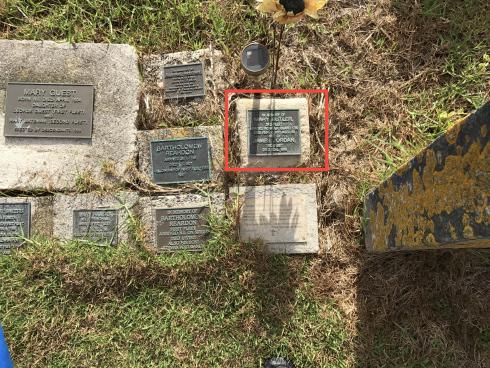
The “New Goal” (built in 1847) is only partially still there – and the site of many tours. What is there is pretty imposing. The remains of the sewerage system and the outline of some of the very small cells can still be seen in some parts. Many stories of the brutality of the Commandants and the guards prevail – but I was taken with the story of Captain Alexander Maconochie who was there from March 1840 till 1844. He was a reformer and was sent there to try to improve the conditions. This he did to such an extent it was then considered to be ‘too soft’ and he was removed. I don’t usually quote “Wikipedia” but I think they summed it up nicely - “Upon reaching the island, Maconochie immediately instituted policies that restored dignity to prisoners, achieving remarkable success in prisoner rehabilitation. These policies were well in advance of their time and Maconochie was politically undermined. His ideas would be largely ignored and forgotten, only to be readopted as the basis of modern penal systems over a century later in the mid to late 20th century.” I find it interesting that many of his ideas are now widely used and that the Alexander Maconochie Centre, a prison in Canberra, is named in his honour. He was truly a man before his time. Look him up – it makes great reading. It also explains why so many prisoners from his time did not reoffend and many settled down and led fruitful lives – often remaining on Norfolk.
There are many other ruins throughout the island. We came across one on our first day – a (very imposing) large wall with many arches. We found out later it was the stables for the officer’s horses. There are the remains of many small huts dotted around the island, which would have been were those convicts trusted enough to live outside and tend the stock or farms would have lived. Many of the ruins are on private property and not accessible to the public.
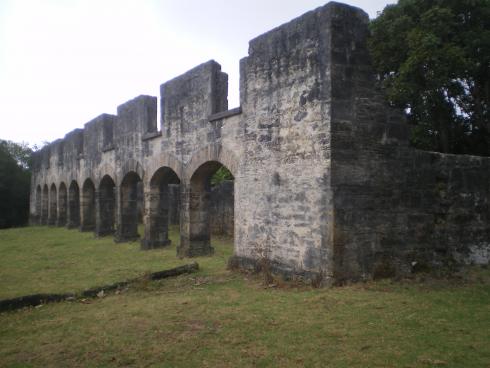
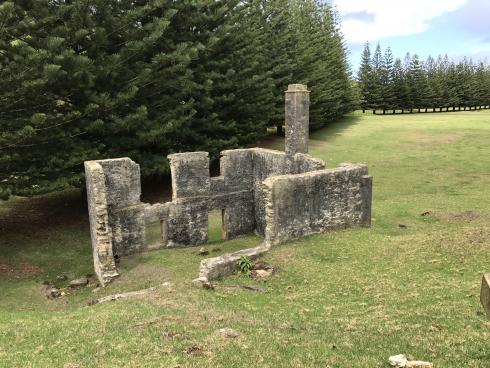
The origin of many of them are explained on the DIY Discovery Tour you can get. This is highly recommended. We got ours as part of our entry to “The World of Norfolk Exhibit” which as I think I mentioned before is on the first floor of the Mall and only open Mon to Fri 9 till 11am. You have to go there. The photo’s were taken by Robin Nisbet and are simply stunning! The explanations of so much of their life since the Pitcairners arrived is excellent. Many of the industries and customs that have at some stage flourished on the Island are recorded there – some still exist, some are long gone. In the meantime you can visit on line at www.robinnisbet.com and I am sure it will whet your appetitie.
The DIY Discovery Tour is in the form of an Ipod, a map – and instructions how you can tune it to come through your car’s radio speakers if you want to listen as you drive. It has 6 different “Audio Tours”
1. Discovery – which directs you to, and tells you about 13 of the most interesting places on Norfolk Island.
2. Out of the Way Places - which takes you to 11 places not usually on the tourist trail and tells you about them. (This is the one I liked the best.)
3. Walk in the Park – which is a great one for those who like to trek as there are several trails on the island, and the only way to see some things are by using the trails, which are mostly through the National Park.
4. Voices from the past - hear the stories from the past at 14 different locations, which brings the places to life.
5. Norf’k Laengwij - takes you to 6 sites and helps you to learn something about the language – which is a mixture of very old world English and Tahitian.
6. Convict Kingston – which takes you to 27 places around Kingston starting at Kingston Pier and ending at Bloody Bridge.
I absolutely loved it. I could have spent more time listening to these, but unfortunately we didn’t manage to collect it long before we left. The restricted opening time did not fit well with other things we were doing which was a real shame. It is noted on my “next time’ list that I get this the first day!
There are any number of tours you can do which will tell you of the history, and some can be tailored to your needs if time is short or you have a particular interest or connection to the Island. Then, there are the “Shows” where much of it is re-enacted. These range from the dramatic as in the “Trial of the Fifteen” as mentioned before, the “Sound and Light show” (when you drive at night in a bus with a tape playing and the bus has spotlights that light up the area outside where the actors play out the scene and “lip sync” the spoken words very well) and the “Fletcher’s Fate dinner” to the “Mutiny on the Bounty Show’ and then the all time favourite when guests are issued prisoners outfits and spend the “Night as a convict” – but as dinner is served and everyone comes home all smiles it is all fun rather than truly representative. I think it special when you have the descendants playing the roles of the people they represent. I am told many of the high school boys (in particular) love to take part – they make great convicts!!!!
The night we did the Sound and Light show, here we were with the buses parked across the road at Bloody Bridge and the actors playing out the dastardly deeds that earned it its name, when a hire car drove up on the other side. It stopped when it saw what was happening, and despite one of the actors going and speaking with them decided they had to proceed through. So actors and buses all pulled to the side of the road so it could go on its way, then resumed, but somehow the mood was lost. Our driver said that in the 9 years she had been driving that had not happened before. On the odd occasion a vehicle comes along, usually they pull over, dowse their lights and wait for it to be finished – bearing in mind it only takes a few minutes – 5 at most.
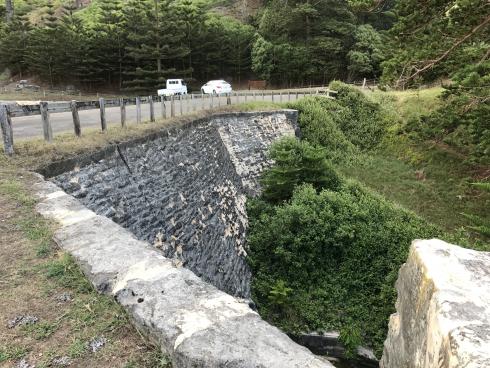
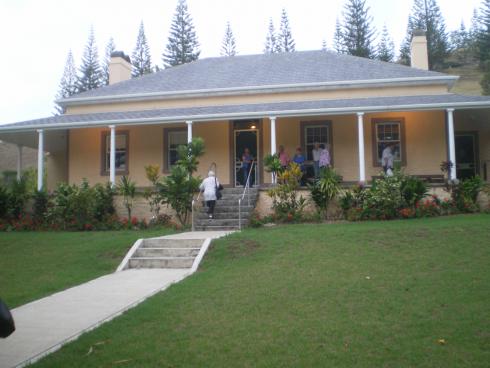
The one we all enjoyed the most was the “Ghost tour”. The bus picked us up and took us first to one of the old homes in Quality Row, where we were met by our ‘ghostly’ host, then taken to what would have been the servants quarters and provided with dinner and regaled with some tales of the house in question and some of the neighboring ones. Then we went back in the bus and down to the “New Goal” where we got out and did a lantern tour of that area and then the ruin of what was the Hospital. I (unknowingly) spoilt one of their effects by sitting down in one of the doorways through which one of the other characters (of the tale being told at the time) would appear. I have to say they handled it well so I think I may not have been the first person to do that. We dropped our Ghostly Host back to the cemetery at the end of the tour. Have to say the make-up, costume, and the way she conducted herself was ‘spot on’ and we all came home on a high as you do after a great night out. (We did not see any ghosts I have to report, but my camera started playing up next day and now it seems I will have to replace it – which was one thing they did warn us about! )

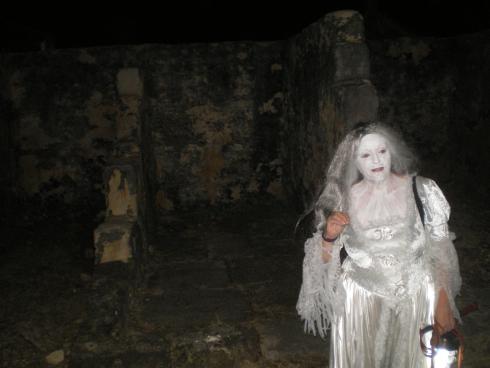
A close second for me was the “Wonderland by night”. This was when we strolled along a path in a pine tree rainforest and every so often there was a ‘set’ which was lit up for us, and a bush poem by local Archie Bigg was read/recited pertaining to the ‘set’. It was truly magical – especially as it was a beautiful night. (We had been booked to go the previous week but it was a bleak wet night so we had cancelled for then and rebooked for the following week. We were so pleased we had when it was such a lovely night.) For those not able to make the (about 500m) walk they have what they call the ‘moon buggy’ which transported them. At the end we got a cuppa and cake before heading home. Needless to say I had to buy a copy of his book titled “Morla el do” (Tomorrow will do) as I love my bush verse and this is some of the highest standard. Once I get his consent I will no doubt be reading them at some of the functions I attend and I am sure those who hear them will enjoy them as much as I have.
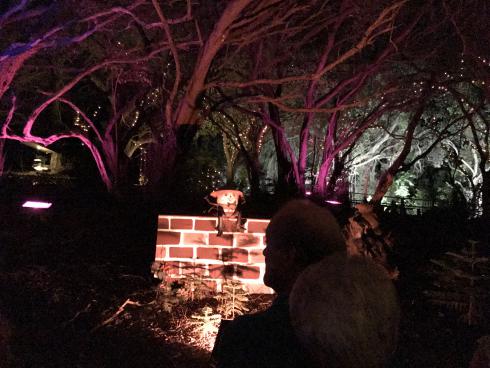
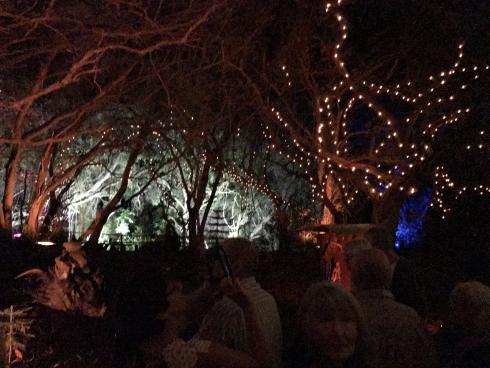
There is one part of history still alive and well at Norfolk Island and I was disappointed I did not get to witness it for myself as the seas did not allow it. The locals call it “Working the Ship”. Norfolk has two ports, the original Kingston Pier in the south and the Cascade Pier in the north, but neither is a deep water port. The one used depends on conditions at the time. So the vessels are forced to anchor about 1 kilometre offshore and all the cargo is unloaded into lighters and towed ashore. These lighters are open boats about 10m long built of Norfolk pine with a keel, stem and stern with a sweep to help maneuver alongside the pier. They look heavy and cumbersome (there were several old ones lying around at a few places so I could have a good look at them) and I am pleased I do not have to drive one of the motorized launches that tows them. They are meant to carry large amounts at a time, but when a car or a bus has to be unloaded they rope two together for greater stability and put the vehicle across the two of them. There are a few thousands vehicles on the island so this has happened many times obviously! All of the goods sold on the island come in this way. Livestock are always unloaded first. Pallets are loaded into nets and timber, steel and other heavy items are slung with steel rope and heavy duty nylon straps. The cargo boats come in every 6 weeks and one was due in while I was there, but the seas prevented it from unloading. We saw it sitting off the west coast waiting for the seas to subside. Many of the men are involved in this process each time, and it is a source of part time work for many of them. It also ensures that the traditional maritime skills are still maintained and passed down. The pier at Kingston does not have a very easy access even for these small launches and lighters. There is a reef in front of it and only a narrow passage to one side – and the water is not very deep – under a metre at low tide. I watched the wave action there a couple of days, and having spent a bit of time “around boats” (in my Gulf days) I can assure you it is no place for a novice even in calm seas. They say 600 tonnes can be unloaded in a day this way – so they must have it down to a ‘fine art’. I hope I get to see it for myself on my next visit.
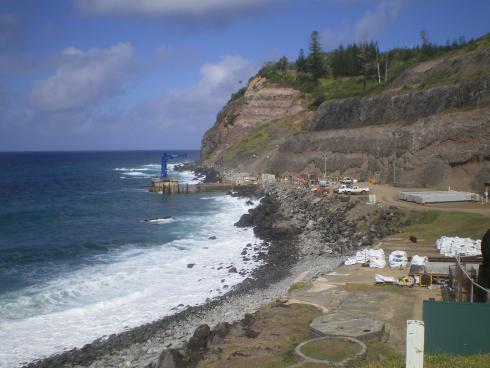
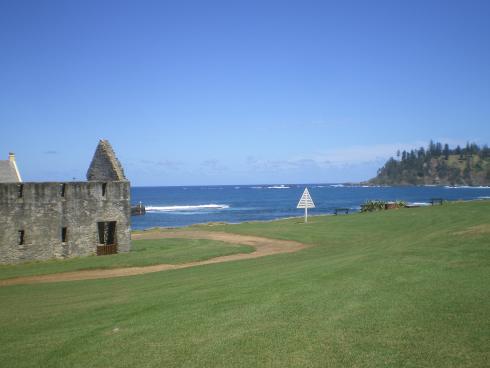
Friends went there on their honeymoon 55 years ago this month. They had told me about the process they had to go through to land and said that if it was still the same I was to be sure to get to see it. So I was doubly disappointed when I missed out. There were supposed to be two cruise liners come in too – on the Monday and Friday when I was there, but the weather did not allow them either. They have to unload their passengers at sea and bring them in in their own tenders. Each was reported to have a potential 500 visitors – so the loss of their patronage would have been felt by the tour operators. On the Monday, I got up early and went to check as I had not heard it had been cancelled. I was not the only one. Several people had done the same. On the Friday though we had heard on the Thursday it was cancelled so I did not bother. This boat was seen sailing around the island though (not by me) whereas the other one had bypassed at a distance.
As a matter of interest all the fuel and gas used on the island has to be pumped ashore from the tanker sitting offshore again. This is done at Balls Bay, which I think I read somewhere was the site of the whaling station when that industry was in full flight. We went down there so I could at least see the land based connection and pipes, but again, nothing was happening when we were there. The gas cylinders are on the lower level near the shore but the fuel is further up the hill and has t be pumped up there as well. It would not be an easy operation one suspects. It also helps to explain why some (not all) things are so expensive on the island.
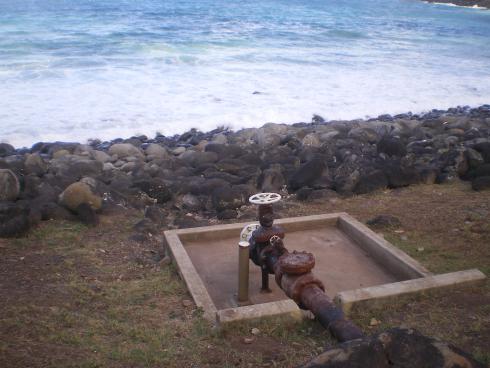
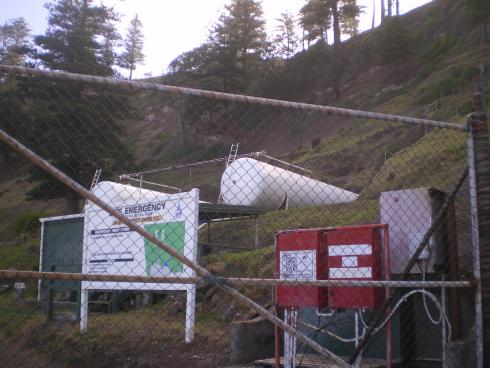
I can’t leave the History section with telling you about the Cyclorama. For over a decade now this wonderful exhibit has been “wowing” people and winning Tourism Awards. In essence it is a 360 degree painting – but it is so much more than that. It is based on an 1800 art form and one of only a few in the world. It depicts the story of Fletcher Christian, the mutiny on the Bounty and the subsequent settlement at Pitcairn and later Norfolk Island. As you walk around it is like you are standing on the wharf, or the beach, or the deck of the ship, and the painting (and props) are on the floor as well as the wall in front of you. The soundtrack was composed by a local – Rick Robertson - and brings it to life even more. A Fletcher Christian descendant Marie Bailey had the idea, and 2 Norfolk Island artists Tracey Yager (also a mutineer descendent) and Sue Draper painted it. It really is too hard to describe it and do justice to it. It really needs to be seen for yourself. Check it out at http://www.norfolkcyclorama.com and see what I mean. While you are there you can browse through the Gallery Guava, enjoy a snack or meal at Hilli Restaurant (Highly recommended) and visit the Queen Victoria Gardens next door.

